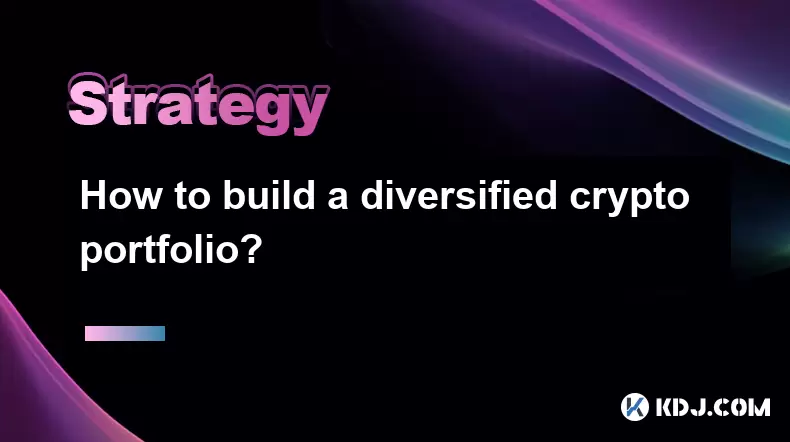-
 Bitcoin
Bitcoin $116900
0.00% -
 Ethereum
Ethereum $4280
5.48% -
 XRP
XRP $3.265
-1.45% -
 Tether USDt
Tether USDt $1.000
-0.01% -
 BNB
BNB $807.0
1.41% -
 Solana
Solana $183.1
2.93% -
 USDC
USDC $0.9999
0.00% -
 Dogecoin
Dogecoin $0.2440
6.50% -
 TRON
TRON $0.3357
-0.88% -
 Cardano
Cardano $0.8178
2.63% -
 Hyperliquid
Hyperliquid $44.13
7.45% -
 Chainlink
Chainlink $21.39
9.09% -
 Stellar
Stellar $0.4524
-0.84% -
 Sui
Sui $3.957
2.13% -
 Bitcoin Cash
Bitcoin Cash $572.7
-2.54% -
 Hedera
Hedera $0.2671
1.54% -
 Avalanche
Avalanche $24.77
4.17% -
 Ethena USDe
Ethena USDe $1.001
0.02% -
 Litecoin
Litecoin $122.3
-1.94% -
 Toncoin
Toncoin $3.432
2.26% -
 UNUS SED LEO
UNUS SED LEO $9.007
0.49% -
 Shiba Inu
Shiba Inu $0.00001396
5.26% -
 Uniswap
Uniswap $11.09
1.64% -
 Polkadot
Polkadot $4.155
4.57% -
 Dai
Dai $1.000
0.00% -
 Pepe
Pepe $0.00001253
5.11% -
 Cronos
Cronos $0.1588
2.67% -
 Bitget Token
Bitget Token $4.512
0.05% -
 Monero
Monero $275.0
0.64% -
 Ethena
Ethena $0.7527
15.10%
How to evaluate your risk tolerance?
Your financial goals, investment experience, and emotional resilience to market fluctuations influence your risk tolerance, impacting your investment decisions and asset allocation choices.
Feb 25, 2025 at 02:00 pm

Key Points:
- Understand your financial goals and time horizon
- Determine your investment history and experience
- Assess your emotional response to market fluctuations
- Consider your income and net worth
- Conduct a comprehensive risk assessment
Step 1: Understanding Your Financial Goals and Time Horizon
Your financial goals and time horizon play a crucial role in determining your risk tolerance. If your investment objective is long-term and your goals are clearly defined, such as saving for retirement or a major purchase, you may be able to tolerate higher levels of risk. This is because you have more time to ride out market fluctuations and potentially recover from losses.
On the other hand, if you have short-term financial goals or require immediate access to funds, a lower risk tolerance may be more appropriate. This ensures that you minimize the likelihood of substantial losses that could impact your immediate financial needs.
Step 2: Determining Your Investment History and Experience
Your investment history and experience can provide valuable insights into your risk tolerance. If you have a history of investing successfully and managing your emotions during market downturns, you may be more comfortable with higher levels of risk. This experience can help you make informed decisions and avoid panic selling during market fluctuations.
Conversely, if you are new to investing or have limited experience, a lower risk tolerance may be prudent. This will allow you to gradually build your confidence and knowledge before venturing into higher-risk investments.
Step 3: Assessing Your Emotional Response to Market Fluctuations
Your emotional response to market fluctuations is a critical factor in determining your risk tolerance. If you tend to react impulsively to market volatility, such as making rash decisions or selling assets in a panic, you may have a lower risk tolerance.
It is essential to recognize and manage your emotional reactions to market movements. This involves developing a disciplined approach to investing and sticking to your long-term financial plan. Emotional decision-making can lead to poor investment outcomes.
Step 4: Considering Your Income and Net Worth
Your income and net worth can influence your risk tolerance. If you have a stable and relatively high income, you may be able to tolerate higher levels of risk because you have the financial capacity to recover from potential losses.
However, if your income is modest or you have a low net worth, a more conservative risk tolerance may be advisable. This ensures that you prioritize financial stability and minimize the potential impact of investment losses on your overall financial health.
Step 5: Conducting a Comprehensive Risk Assessment
A comprehensive risk assessment involves carefully analyzing your investment goals, time horizon, investment history, emotional resilience, income, and net worth. Based on this assessment, you can assign a numerical value to your risk tolerance, such as "low," "moderate," or "high."
This numerical representation can help you make informed investment decisions and select suitable asset allocations. It provides a benchmark against which you can evaluate the riskiness of potential investments and adjust your portfolio accordingly.
FAQs Related to Risk Tolerance:
1. What is the most important factor in determining my risk tolerance?
There is no single most important factor. Your financial goals, time horizon, investment history, emotional response, income, and net worth all play a role in shaping your risk tolerance.
2. Can my risk tolerance change over time?
Yes, your risk tolerance can change over time as your financial situation, life circumstances, and emotional resilience evolve. It is important to reassess your risk tolerance periodically, especially after major life events or changes in your financial circumstances.
3. What are some signs of a low risk tolerance?
- Panic selling during market downturns
- Difficulty sleeping due to anxiety about investments
- Consistent focus on short-term price fluctuations
- Lack of confidence in your investment decisions
4. What are some tips for managing a high risk tolerance?
- Diversify your portfolio to spread your risk
- Invest for the long term and ride out market volatility
- Have a clear investment plan and stick to it
- Stay informed about market conditions but avoid emotional reactions
Disclaimer:info@kdj.com
The information provided is not trading advice. kdj.com does not assume any responsibility for any investments made based on the information provided in this article. Cryptocurrencies are highly volatile and it is highly recommended that you invest with caution after thorough research!
If you believe that the content used on this website infringes your copyright, please contact us immediately (info@kdj.com) and we will delete it promptly.
- Trump, Nasdaq, and Token Treasury: WLFI's $1.5B Gambit
- 2025-08-10 06:50:12
- Trump, Nasdaq, and Token Treasury: WLFI's $1.5B Play
- 2025-08-10 06:30:11
- Coinbase, DEX Trading, and Base Network: A New Era for Crypto?
- 2025-08-10 06:30:11
- Block Inc., Bitcoin, and Mining Chips: Reshaping Digital Finance, New York Style
- 2025-08-10 06:50:12
- Stablecoin Surge Ignites Altcoin Investment Hunt: What's Hot Now?
- 2025-08-10 06:55:16
- Penny Crypto Dreams: Can XRP Reach $10,000? A Look at LILPEPE and the Meme Coin Mania
- 2025-08-10 04:50:11
Related knowledge

How to use stop-loss orders to limit potential losses?
Aug 08,2025 at 02:01pm
Understanding Stop-Loss Orders in Cryptocurrency TradingA stop-loss order is a risk management tool used by traders to automatically sell a cryptocurr...

How to read cryptocurrency charts and use technical analysis?
Aug 08,2025 at 11:08am
Understanding the Basics of Cryptocurrency ChartsCryptocurrency charts are graphical representations of price movements over time. These charts are es...

How to do your own research (DYOR) before investing in a crypto project?
Aug 08,2025 at 09:07pm
Understanding the Core Principles of DYOR in CryptocurrencyEngaging in due diligence before investing in any cryptocurrency project is essential to mi...

How to build a diversified crypto portfolio?
Aug 09,2025 at 12:21pm
Understanding the Importance of Diversification in CryptoDiversification in the cryptocurrency space is a strategy used to reduce risk by spreading in...

How to avoid common crypto investment mistakes?
Jul 13,2025 at 01:35am
Understanding the Risks of Crypto InvestmentInvesting in cryptocurrency can be highly rewarding, but it also comes with significant risks. One of the ...

What is a long-short crypto strategy?
Jul 15,2025 at 10:56am
Understanding the Basics of a Long-Short Crypto StrategyA long-short crypto strategy is an investment approach where traders simultaneously take long ...

How to use stop-loss orders to limit potential losses?
Aug 08,2025 at 02:01pm
Understanding Stop-Loss Orders in Cryptocurrency TradingA stop-loss order is a risk management tool used by traders to automatically sell a cryptocurr...

How to read cryptocurrency charts and use technical analysis?
Aug 08,2025 at 11:08am
Understanding the Basics of Cryptocurrency ChartsCryptocurrency charts are graphical representations of price movements over time. These charts are es...

How to do your own research (DYOR) before investing in a crypto project?
Aug 08,2025 at 09:07pm
Understanding the Core Principles of DYOR in CryptocurrencyEngaging in due diligence before investing in any cryptocurrency project is essential to mi...

How to build a diversified crypto portfolio?
Aug 09,2025 at 12:21pm
Understanding the Importance of Diversification in CryptoDiversification in the cryptocurrency space is a strategy used to reduce risk by spreading in...

How to avoid common crypto investment mistakes?
Jul 13,2025 at 01:35am
Understanding the Risks of Crypto InvestmentInvesting in cryptocurrency can be highly rewarding, but it also comes with significant risks. One of the ...

What is a long-short crypto strategy?
Jul 15,2025 at 10:56am
Understanding the Basics of a Long-Short Crypto StrategyA long-short crypto strategy is an investment approach where traders simultaneously take long ...
See all articles

























































































